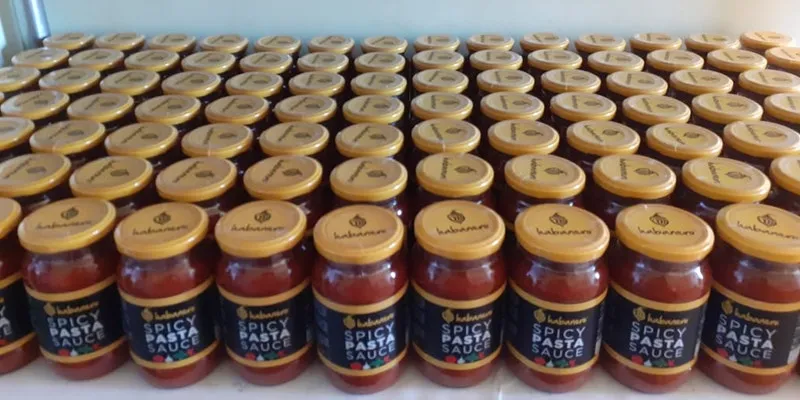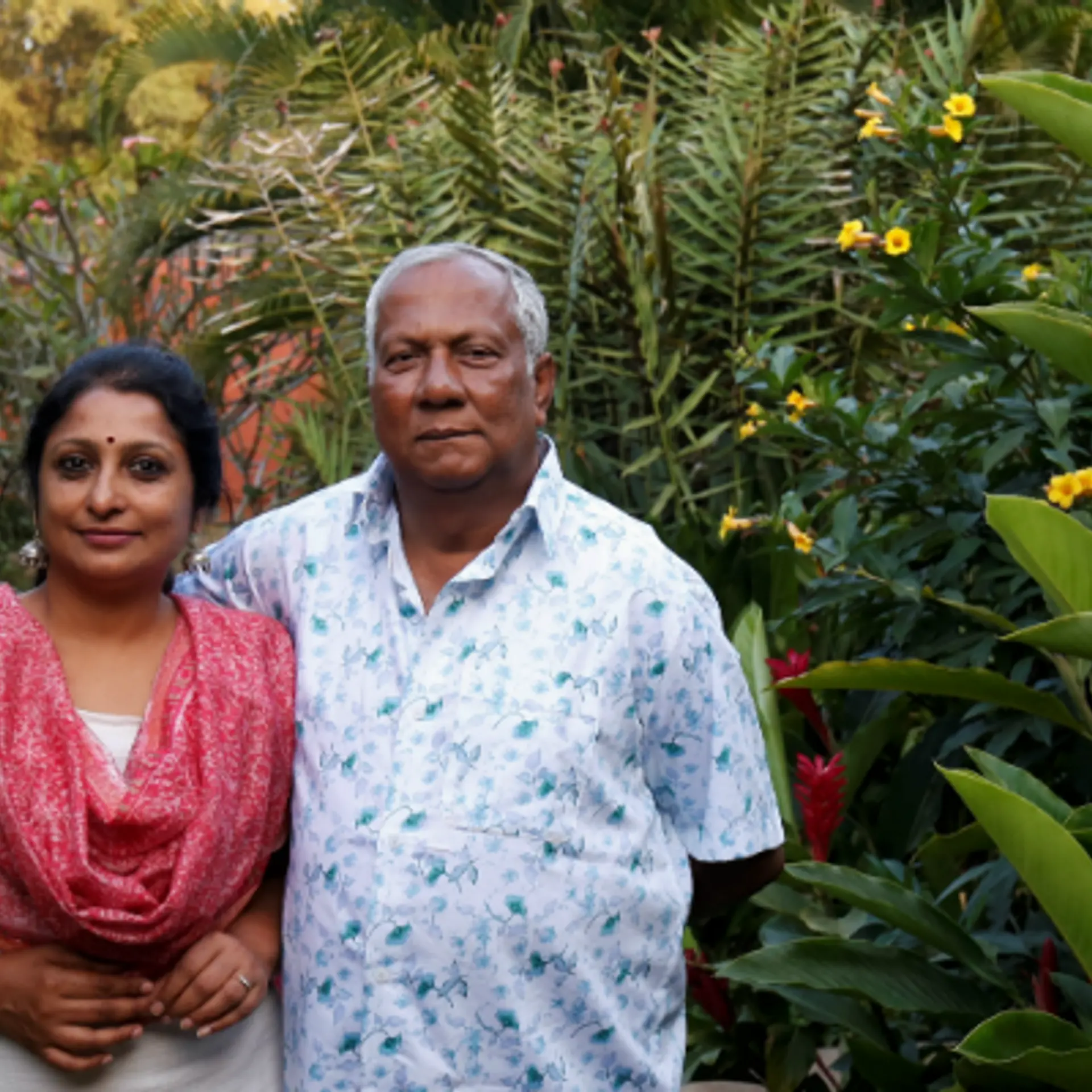From Subway to Habanero, how a Bengaluru entrepreneur makes Rs 1.5Cr revenue by selling sauces
Griffith David owns six Subway outlets and used this experience to start Mexican restaurant Habanero. Then, he decided to pivot to a retailing business for sauces and dips.
A mouth-watering aroma of freshly-baked bread is sure to hit you as you enter Bengaluru’s Kempegowda International Airport. And only one store is responsible for this: the Subway outlet, which bakes fresh bread up to 10 times a day to meet its massive demand.
This outlet also holds the record for selling the most submarine sandwiches annually across all Subway outlets worldwide.
Its owner is Griffith David (50), a Bengaluru-based entrepreneur.
“My outlet at Bengaluru airport was awarded number one in unit sales worldwide in 2015 and 2019. It is in a great location, open 24/7, managed efficiently, and serves only fresh food. Further, we ensure the line moves quickly. This way, we are able to sell around 1,200 subs each day,” he tells SMBStory.
Griffith has an IT background and holds an MBA from Thunderbird School of Global Management, Arizona. He initially did not understand the restaurant business too well. But he wanted to enter the food industry and decided to take up the Subway franchise to gain some experience.
This proved to be very useful as he acquired the know-how required to run a restaurant. Subsequently, Griffith acquired the franchise to open five other Subway outlets.
But his real success story lies in how he channelled his learnings from running these outlets into his restaurant and sauces business Habanero. Right from sourcing the ingredients to managing operations efficiently, Griffith ran Habanero using strategies he picked up from his Subway experience.
These lessons also helped him pivot the restaurant business to a retailing one selling sauces and dips. Today, it claims to be clocking a revenue of Rs 1.5 crore and has 30 employees.

Griffith David, Founder, Habanero
In an exclusive interaction with SMBStory, Griffith shares his entrepreneurial journey and explains how he transformed his business model.
Edited excerpts from the interview:
SMBStory [SMBS]: How did you fall in love with food?
Griffith David [GD]: Earlier, I worked with Intel and Yahoo and used to manage teams and business units in Asia, Europe, and North America. My corporate experience was largely in the IT, internet, and the wireless industry. As a result, I ended up living in countries like the US, Finland, Dubai, and Singapore for several years.
In these places, I began enjoying various kinds of cuisines across cultures. I realised that food can cut across barriers and connect people. And even though, my corporate life was comfortable, I made up my mind that I wanted to venture into the food industry.
SMBS: How did the Subway franchise and Habanero happen?
GD: During my corporate career, I used to travel back to India. Eventually, I started to feel inspired to start a food business here. But, I knew nothing about the industry. After narrowing down my options, I thought of starting a restaurant. However, I needed some experience first.
I acquired a few Subway franchised outlets to learn more about the industry. I then picked up skills in marketing and joined Subway’s marketing board in India.
When I decided to start Habanero in 2012, I reached out to the same suppliers that delivered to my Subway outlets and several other international brands. This way, I could ensure that only high-quality and locally-sourced ingredients went into the food and sauces being made at Habanero.
SMBS: What was it like running the restaurant Habanero?
GD: I had made several connections while running the Subway outlets and being on the company’s marketing board. Using this experience and expertise, I brought in a team of experts and a Tex-Mex chef from Singapore who started working for Habanero.
We started in Bengaluru and expanded to Chennai and Hyderabad in the next few years. The restaurants soon became popular and the customers loved the salsas and dips we made in-house. This went on for a few years, but things slowly started to change.
Despite having loyal customers, Habanero became an unsustainable business. The format was too large. Costs and rentals were going up, liquor prices also shot up, and cloud kitchens and food delivery services were creating an upheaval in the restaurant industry.
I realised the model was not working, and the restaurant was not making much money.

Habanero's spicy pasta sauce
SMBS: What was the next step? How did you plan your pivot?
GD: The restaurant wasn’t doing well but our loyal customers kept coming back for our sauces, salsas and dips. I had also seen a lack of international quality sauces and dips at affordable rates whenever I walked into retail stores.
This sparked the idea of venturing into a retail model where I could make these sauces on a larger scale and sell them to customers. Retail could be a bigger, more valuable, and a scalable business than a restaurant.
But I would still retain the core of what I did – make sauces and dips using high quality, locally-sourced ingredients. So, in 2018, I invested over Rs 2 crore to start the retail business and began manufacturing at a unit in Bengaluru.
SMBS: How did you decide how to position your products?
GD: There was a gap in the market for sauces and dips. Most retail stores housed high-quality imported products, but they were expensive due to large import duties and tariffs. A bottle of pasta sauce cost would between Rs 400 and Rs 500.
The locally-made products, however, were significantly cheaper, but were of substandard quality, based on my experience. A bottle of pasta sauce cost around Rs 100 but it didn't match up to international standards.
Thus, there was a clear gap for a player to retail high-quality sauces and dips at affordable rates. There was nobody else occupying this space.
SMBS: How did you price the products?
GD: I did not want to import any ingredients. Locally-sourced ingredients that suppliers were selling to international brands were of high-quality but were not expensive. I decided to source from them and added my manufacturing, packaging, and distribution costs.
I realised I could price the products slightly higher than the Indian brands and still make a good margin. I would always look at the production cost for any product, compare it with the competitors’ pricing, and then decide on my margins.
For instance, I decided I would price the pasta sauce bottle for between Rs 150 and Rs 180, slightly more expensive than the Indian brands, but mirrored the high-quality of the imported pasta sauce.
SMBS: How did you know which product categories to address?
GD: I always knew we were too small to create an entire product category by ourselves. I ventured into sauces and dips knowing the demand that existed. I knew what people loved in the Habanero restaurant.
I also spoke to more people and retailers to understand consumer behaviour better. This helped me create the best possible products in an existing category. I did not want to enter any category where I couldn’t add any value.

Habanero's range of sauces and salsas
SMBS: Who is your target audience?
GD: In the B2C segment, mothers and working professionals buy our product the most. Habanero sauces and dips are convenient and satisfy their taste buds for international flavours and cuisines. Our sauces and salsa are also vegan and gluten-free.
In the B2B space, anyone in the HoReCa (Hotel/Restaurant/Café) segment looking to introduce these flavours into their menus is important for us.
We’re helping them save time as making these sauces from scratch is time-consuming and expensive. Further, around 500 retail chains stock our products.
SMBS: What are some of the challenges you faced?
GD: Since I was making sauces and dips in larger volumes, it was difficult to ensure consistency in every batch. It took a lot of time to crack this. Getting into retail stores was expensive as they charged high listing fees and foreign players were already present in large numbers in these stores.
It was also hard sourcing the right kind of bottles for packaging Habanero products. There were always a limited number of bottles available in the market and placing orders was an expensive affair.
Building brand awareness was the next challenge. People knew Habanero as a restaurant and not so much as a sauces brand. We used emailers, social media for marketing, and started selling on Amazon and Bigbasket to boost our reach. The online segment now makes up 25 percent of our sales, and is the fastest-growing segment.
SMBS: What are the future plans for the company?
GD: The Indian condiments market is projected to grow at a CAGR of over 13 percent, to reach $1,340.5 million by 2024.
I have seen that increasing cross-cultural interaction, inclination towards consumption of Western food and cuisines, and a growing number of modern retail outlets fuelling this growth.
To tap into this, Habanero is looking to broaden its offline footprint in the country. So, we will be entering new geographies. We are also exploring foreign markets.
In terms of the product portfolio, we will be adding sriracha sauce to the current mix. People are moving away from ketchup, actively seeking other options for salsa and sauces. We are also looking to add wholesome and flavourful salad dressings, and a wider range of tortillas and wraps to our portfolio.
From a business standpoint, we are looking to raise funds to fuel growth, and are in talks with several VCs for this.
(Edited by Saheli Sen Gupta)










